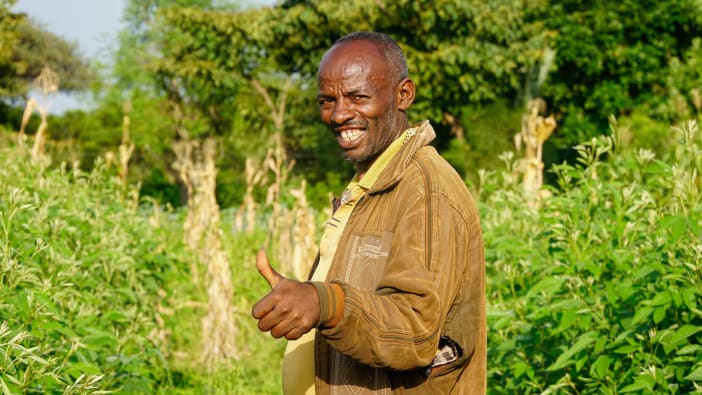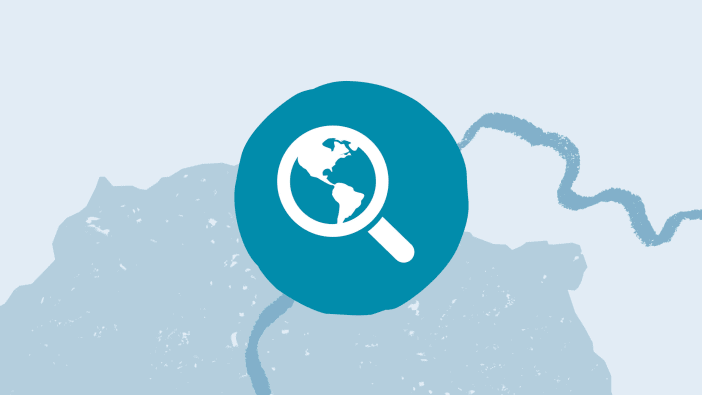by Drs Neela and Amitava Mukherjee.
For the 350 million people in India who live below the poverty line, food security is literally a matter of life and death. Agriculture supports nearly 70% of the population in India, most of whom own less than 2 hectares of land.
We believe that a household or community or nation is food secure if:
- culturally acceptable food is grown and available
- people have the ability to buy food
- people are free to choose to buy available food
- available food has good nutritional value.
There are three main kinds of food available to small scale farmers:
- foods which can be gathered without cultivation
- food from traditional methods of cultivation – low input farming
- food from intensive, modern methods of farming (using fertilisers, pesticides and modern mechanisation) – high input farming.
In the last two decades, production yields of food grains (such as wheat, rice and maize) from high input agriculture have increased by an astonishing three or four times in India. However, yields for low input agriculture producing crops such as pulses and gram, the main source of protein for the poor, have decreased.
This is leading to a change in food habits. Traditional cereal varieties are disappearing as rice and wheat take over the markets. Even the local varieties of rice and wheat are also becoming scarce. This means that the first condition above – that culturally acceptable food is available – is rapidly disappearing. High input agriculture is leading many small farmers into debt as they try to buy the necessary inputs. The second condition is also therefore under threat as farmers’ ability to buy food is reduced.
Women are often the worst affected as food security deteriorates. They may have to spend long hours working outside the home to raise extra money to buy food. They have the pressures of managing the distribution of food within the family and are most likely to go without food themselves so that their children get enough.
Food gathering provides food both for eating within the home and for sale. This type of food often contains vital vitamins and minerals. During famines, droughts or other disasters it is a valuable source of food, which is why it is also called ‘hunger food’.
Few records reveal how much food is actually gathered. Studies by N S Jodha (1986) in arid areas of India found up to one third of people’s food requirements were being met from this source.
Research into changing food security
Other research has confirmed that it is mainly women who manage household food supplies and use wild or gathered foods to supplement food supplies. The recent rapid rises in grain yield in India do not reflect a similar improvement in food security for the poorest in India. This can be clearly shown by research in the village of Krishna Rakshit Chak, Midnapore District, West Bengal. Villagers belong to the Lodha tribe and are mostly poor, landless labourers.
Participatory exercises were carried out with the women in Krishna Rakshit Chak to discover:
- their knowledge of available wild foods
- their role in the collection of wild foods
- the seasonal availability of all foods
- how the availability of wild food has changed over time.
Women were asked to prepare seasonal calendars of food availability and variety. Using small stones, they showed the availability of foods throughout the year and the amounts available. They then used different kinds of leaves, sticks and twigs to show the availability and consumption of various gathered foods. Here, the amounts consumed were simply estimates.
Researchers then returned just over two years later in 1995 when the women were again asked to make a calendar to indicate any changes which may have taken place.
Results
Women keep track of the different wild foods available. They are usually responsible for gathering food and for its preparation.
Both seasonal calendars revealed long periods of hunger. This is despite official government statistics showing record harvests from high input agriculture and large government food stocks. In 1995 the hunger periods were even longer and more severe. It appears that despite official statistics to the contrary, poorer people faced even greater food insecurity in 1995 than in 1993.
Villagers preferred rice as the main staple food. Their consumption of rice varied according to its availability and price and their own ability to find work and earn income. After harvest (Argrhayan and Poush – mid November to mid January), prices are low and supplies are plentiful. This was when most rice was eaten. The price of rice was the most important factor in whether they chose to buy rice or another staple food.
Villagers were easily able to find work during harvest times and usually afterwards in threshing, winnowing and husking the rice. As rice prices are low at this time and income was usually available from casual work, villagers would buy as much rice as possible for the next few months.
As farm activities finish for the season, villagers make a living by selling fish and firewood and use up grains bought previously. Later in the year life becomes more difficult, the price of staple foods rises and there are many months of persistent hunger when people depend heavily on food gathering. Between 1993 and 1995 the length of the hunger period increased from 5 months to 8 months. In 1995 the amount of wild and gathered food available had reduced.
When villages were asked why the amounts of gathered foods (which had included snails, pumpkin, bitter gourds, spinach, leaves, herbs, green bananas and wild water plants) had reduced in 1995, their explanations were fascinating.
First they said that in 1993 they had free access to the fields of relatively well-off farmers who let them gather foods they did not plan to use. However, these previously well-off farmers were now struggling to make enough money and had begun selling these hunger foods in the local markets.
Secondly they mentioned that the area of common land is shrinking fast. Common lands are now being used for purposes such as social forestry. This means that women and children have to walk greater distances to gather wild foods.
Conclusions
Despite official reports of ‘record food harvests’ and supposed growth in the economy benefiting all households, hunger has increased in this village. The loss of access to wild and gathered foods has lengthened the hunger periods and removed a safety net provided by nature. The state had helped by digging ponds for fish farming and irrigation. However, this tended only to benefit landowners. The need to help with survival strategies for the landless and poorest in society remains an area of major concern for this community and for many others.
Dr Neela Mukherjee is Professor of Economics in the National Academy of Administration, Mussoorie, UP 248 179, India. Her husband, Dr Amitava Mukherjee, is Executive Director of Action Aid India, 3 Rest House Road, PO 5406, Bangalore 560 001, India.
EDITOR: Could you try out similar participatory exercises in your area to help understand people’s needs and their food security situation?









